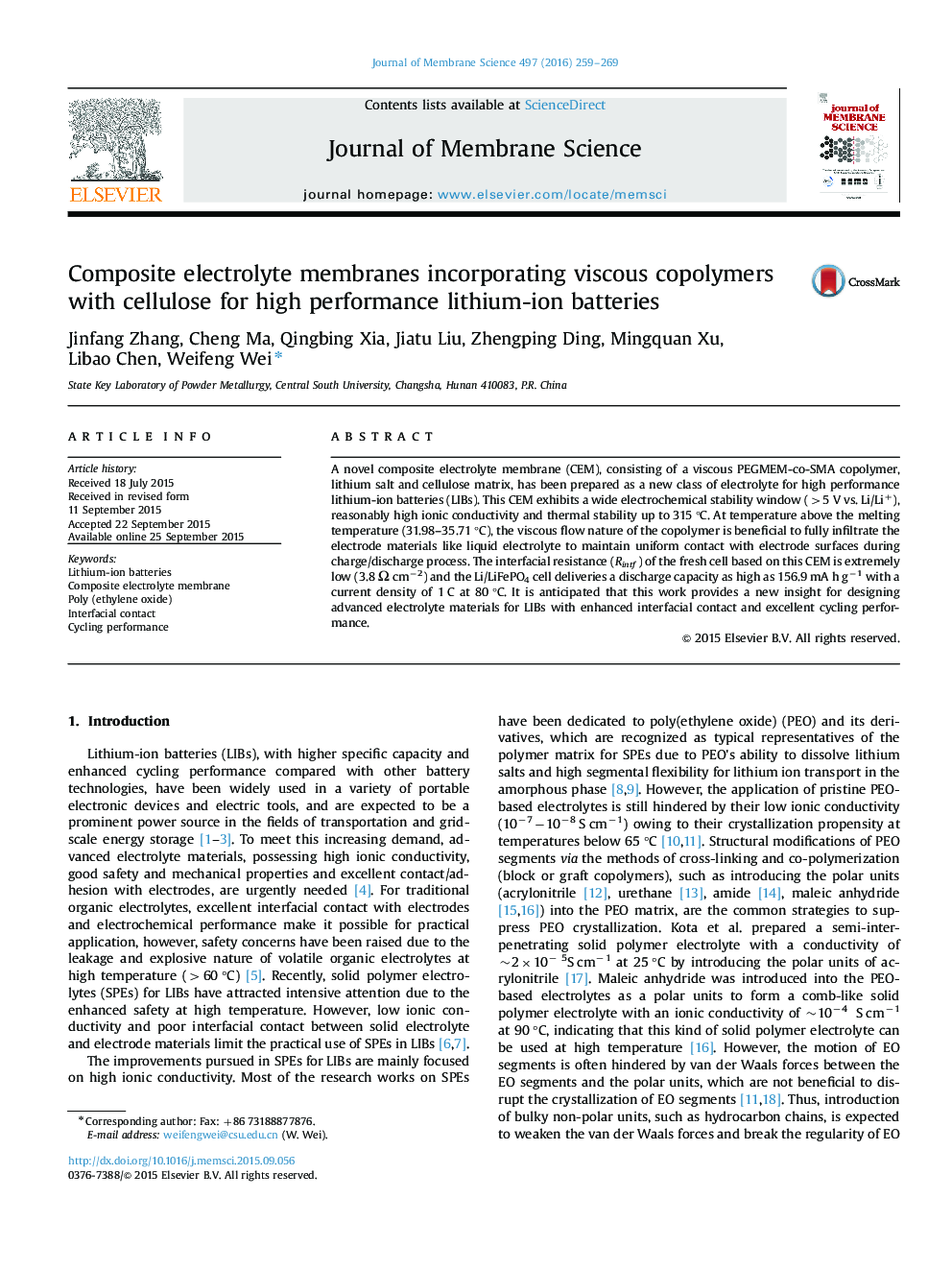| کد مقاله | کد نشریه | سال انتشار | مقاله انگلیسی | نسخه تمام متن |
|---|---|---|---|---|
| 632665 | 1456002 | 2016 | 11 صفحه PDF | دانلود رایگان |
• A novel composite electrolyte membrane, consisting of a viscous PEGMEM-co-SMA copolymer, lithium salt and cellulose matrix, has been prepared as a new class of electrolyte for high performance lithium-ion batteries.
• The composite electrolyte membrane exhibits a wide electrochemical stability window (>5 V vs. Li/Li+) and improved thermal stability up to 315 °C.
• The interfacial resistance (Rintf ) of the fresh cell based on this composite electrolyte membrane is extremely low (3.8 Ω cm−2) owing to the viscous flow state of the PEGMEM-co-SMA copolymer at 80 °C.
• The Li/LiFePO4 cells based on this composite electrolyte membrane deliver a discharge capacity as high as 156.9 mAh g−1 with a current density of 1 C at 80 °C.
A novel composite electrolyte membrane (CEM), consisting of a viscous PEGMEM-co-SMA copolymer, lithium salt and cellulose matrix, has been prepared as a new class of electrolyte for high performance lithium-ion batteries (LIBs). This CEM exhibits a wide electrochemical stability window (>5 V vs. Li/Li+), reasonably high ionic conductivity and thermal stability up to 315 °C. At temperature above the melting temperature (31.98–35.71 °C), the viscous flow nature of the copolymer is beneficial to fully infiltrate the electrode materials like liquid electrolyte to maintain uniform contact with electrode surfaces during charge/discharge process. The interfacial resistance (Rintf ) of the fresh cell based on this CEM is extremely low (3.8 Ω cm−2) and the Li/LiFePO4 cell deliveries a discharge capacity as high as 156.9 mA h g−1 with a current density of 1 C at 80 °C. It is anticipated that this work provides a new insight for designing advanced electrolyte materials for LIBs with enhanced interfacial contact and excellent cycling performance.
Journal: Journal of Membrane Science - Volume 497, 1 January 2016, Pages 259–269
